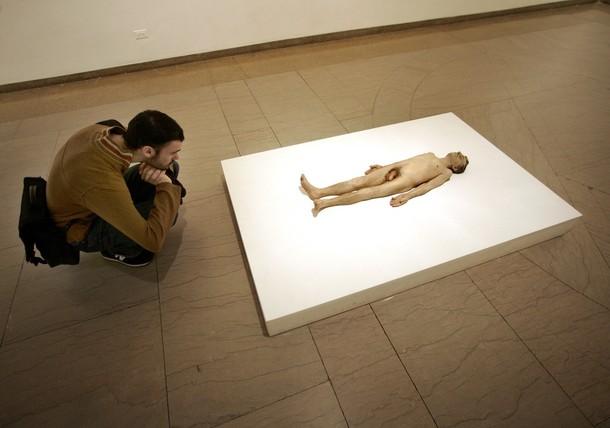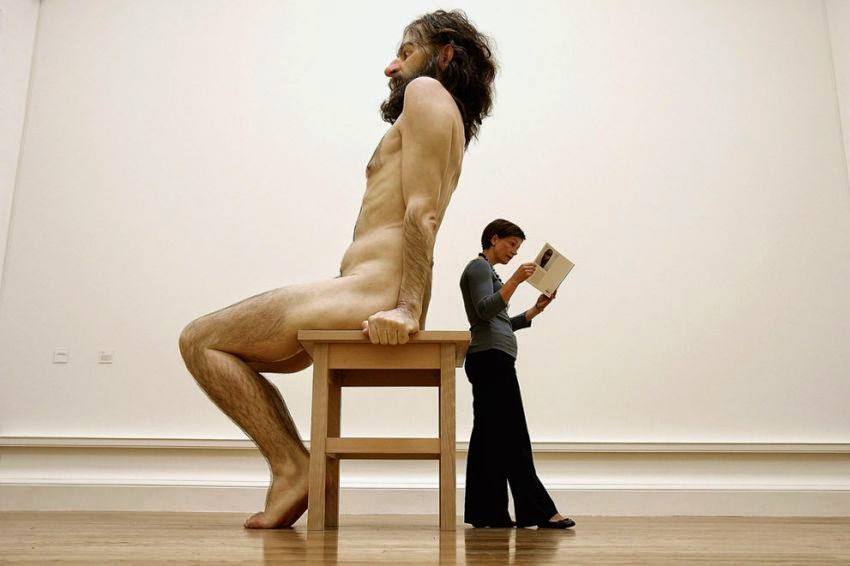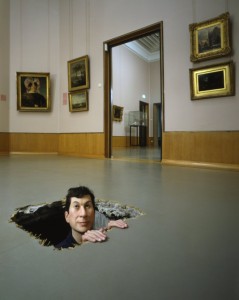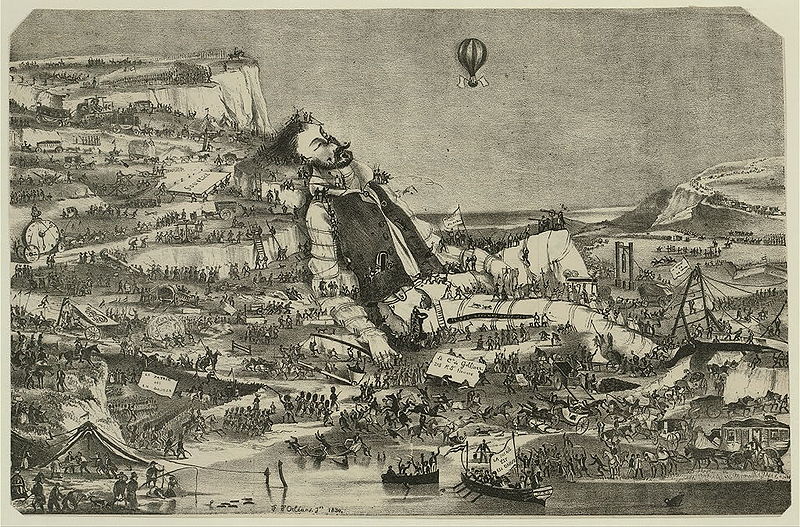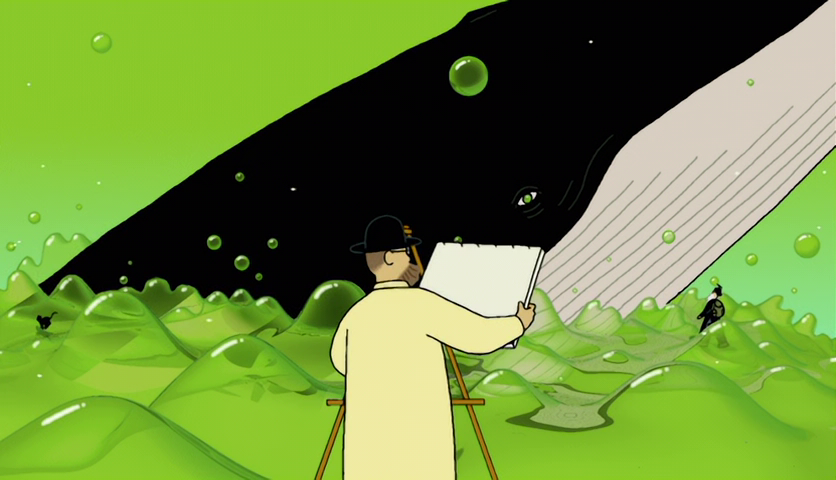User:Chen Junyu/graduation/theise/project proposal/Draft:EMO
Giants & Little People
Why
What this topic interested me is, “scale" is the feature truly appearing on almost every object, either in the reality or in our imagination. When this feature is limited on human body, there is a variety of datas can support our impression of it--the median height of American men is 5 feet 9, Dutch are the tallest average people,or children and adolescents have, on average, increased in height by about an inch and a half every 20 years... and so on. We analyse all the elements which have an impact on our height--nutrition, inheritance,sports and so on. We try different ways to make ourselves grow taller in a "normal" range, since if someone is far too height or short than normals, like gigantic or dwarf, other people will look at them weird.
But when we look at on all kinds of arts, all the works related to human figure, the scale of the human figure is hardly the same as the real size of human being. The most obvious phenomenon is,there are very few human figure statues is made in a real size, such as those human-like gods statues. An interesting example is, in Taiwan, there is certain standard for the size of gods statue to place in different occasions. Such as 5 feet 1 and half, 6 feet 2 and 6 feet 3 and a half are special for temple with the sitting gesture (in Taiwan measure standard). On literature, either fairytale folktalesor myth, we can find different kinds of stories related to "giants" or "little people", which all have distinct difference on scale compared with human being.
Therefore, figure out why people like to create human figure in non-real-size and what kind of magic power it gives to us is the reason why I pick up this topic.
Multiple Medias
Sculpture
- Ron Mueck
One of the most symbolic artists who focuse on abnormal scale human figure sculpture.
- Maurizio Cattelan
Here quote David Lynch's talk about Ron Mueck: " It is sometimes dangerous to talk about things, because the words make things too specific. Every viewer has his own feelings and interpretation."
Novels
- Mary Norton "The Borrowers"
- Jonathan Swift "Gulliver's Travels"--
Part I: A Voyage to Lilliput Part II: A Voyage to Brobdingnag
Animation
- Shigeru Tamura "Glassy Ocean" "A Piece of Phantasmagoria"
In Fairy Tales
We only discuss "giants" and "little people" in a fairy tale context here. Fairy tale has a feature that it transfer and broadcast orally at the beginning, and changes by the time. Compared with other literature genes, the structure of earlier fairy tales and the trend of the story are mostly shaped by audiences. For instance, we can find seven versions of published "Grimms' Fairy Tales". Even though " Grimms' Fairy Tales" already used literature as the tool of broadcasting, still, to gain the volume of sales,also release the dissatisfaction from the public about the negative impact of their books on children, brother Grimms improved their first darker version to much softer stories. In the discussion made in 1929 between Petr Bogatyrew and Roman Jakobson, this infection was named as "correcting influence of the group".Quote from "Folktale As A Special Form Of Creation" :"An item of folklore begins its existence only after it has been adopted and sanctioned by the community. As in the development of langue, the environment prunes a created work to fit its taste; if the community rejects it, it simply dies out."
Since fairytale is a special literature gene, it generate in people and changed by people, it reflects people's thoughts,feelings, reactions, imagination and wished. To collect different fairytales, we can see a rough portrait of these "human figures" in abnormal scale.
Examples
- "The Selfish Giant" Oscar Wilde: The Giant is strong, gruff and rude. It seems time flows more slowly on him than it usually does (He keeps talking to Cornish ogre for seven years, until they have said all they want to say).At the beginning of the story, the Giant has all the worst traits with him.Therefore after the endless lonely and frozen winter, the Giant turned to be so gentle and softhearted. The impression of him turned to be so antagonistic compared what he was before.
- ”Thumbelina“ Hans Christian Andersen:Thumbelina is pretty and fragile. In the story, Thumbelina has been forced to get married with toad, beetle and mole. With the help of swallow, Thumbelina arrives at a beautiful flower field and meet the male fairy. They get married at the end.
- "Der junge Riese" (The Young Giant): There is a conversion in the beginning of this fairy tale. The young giant is used to be a thumb-size boy, he is so weak to help his father, therefore he asks the giant if he can bring him with the giant. After growing up with the giant, the thumb-size boy turns to be a giant also. When he goes back home, there is no enough food for him, therefore he left home to live on himself. The story ends up with he punishes the miller couple who want to kill him.
- "The Evil and His Grandmother": The Evil is a giant, also his grandmother.The giant evil in this fairytale is savage and gullible. His grandmother is much kindhearted, she saves the three soldiers at the end.
- “Jack and the Beanstalk”:There are two giants existing in this fairytale, the Giant and his giant wife. The Giant likes to eat children, for protecting Jack, his wife lies to the Giant. At the end, the Giant dies since he falls down from the beanstalk.
- "The Elves": In this fairytale, the two little people always appear at night and help the shoemaker to do his work secretly. And they are dexterous and easy to be content.
Portrait of Man
Quote from <The Fairytales as Art Form and the Portrait of Man>:"The everyday and the magical objects that are present in the fairytale stand for the everyday world and the supernatural world in general; the human figures in the fairytale have a relationship to both and stand in the tension field of both."
To the everyday world, story tellers give giants and little people human's feature: emotion, behavior patter, different relationship with their races and other races, and so on. As characters existing in supernatural world, they have certain magic feature on the same time: for giants, they are powerful, usually rich and tyrannical; for little people, they are fragile, dexterous and peaceful. We generate these features on them, and create their appearance by copying ours, therefore, it responses a supernatural feeling to us, no matter what kind of specific feeling it generates on certain object, it always has the power to bring us to the gap between real and supernatural world.
References
01.http://en.wikipedia.org/wiki/N%C3%BCwa#Creator
02.http://en.wikipedia.org/wiki/Issun-b%C5%8Dshi
03.http://en.wikipedia.org/wiki/Madame_d%27Aulnoy
04.http://en.wikipedia.org/wiki/Vladimir_Propp
05.Max Lüthi The Fairytale as Art Form and Portrait of Man
06.陳正治 童話寫作研究
07.Roman Jakobson and Petr Bogatyrev "FOLKLORE AS A SPECIAL FORM OF CREATION"
08.http://en.wikipedia.org/wiki/Little_people_(mythology)
09.http://en.wikipedia.org/wiki/Koro-pok-guru
10.http://en.wikipedia.org/wiki/Classic_of_Mountains_and_Seas (靖人)
11.http://en.wikipedia.org/wiki/Giant_(mythology)
12."The Progress Big Man A Conversation with Ron Mueck" by Sarah Tanguy
http://www.sculpture.org/documents/scmag03/jul_aug03/mueck/mueck.shtml

